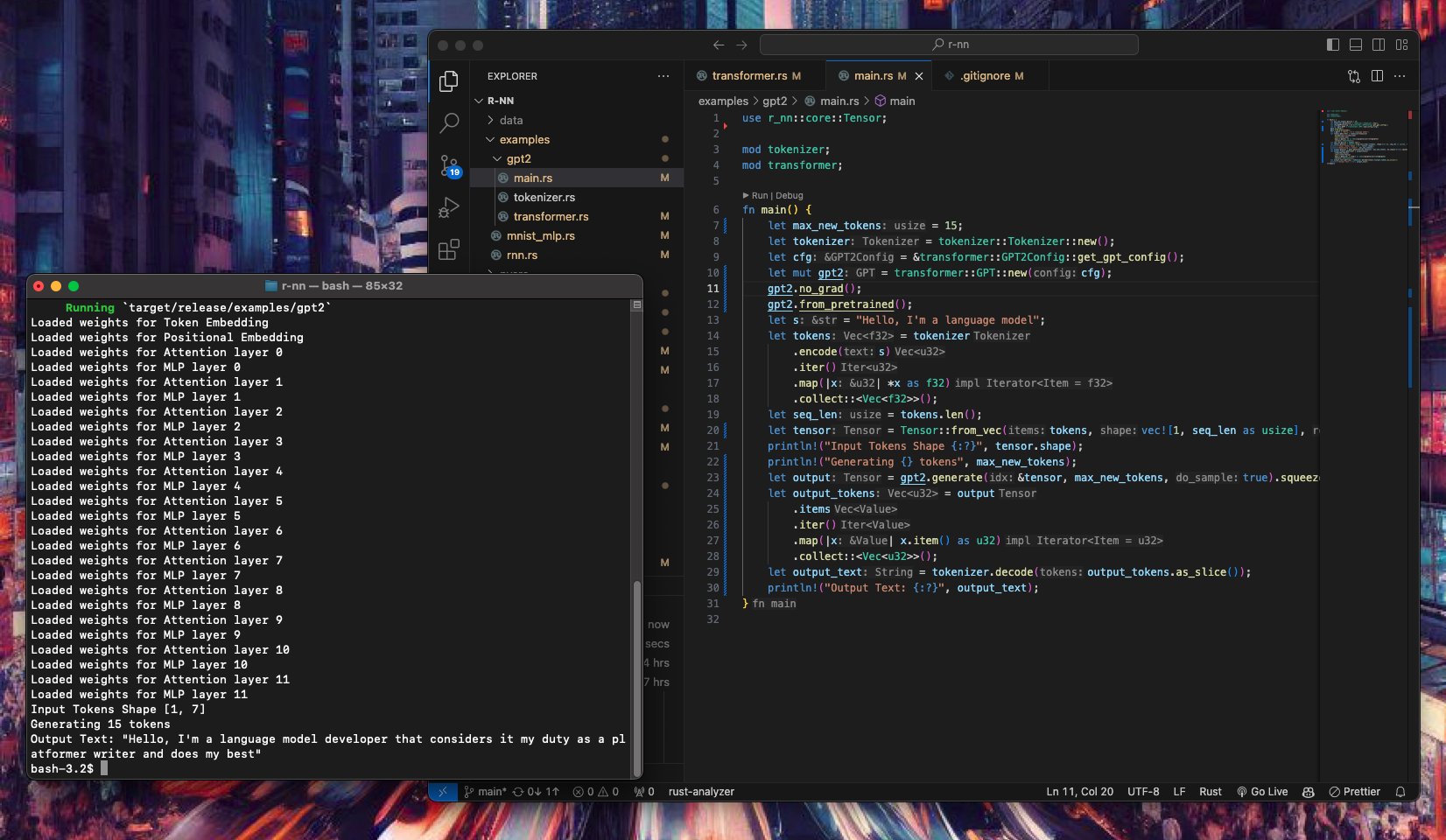r-nn is a Tensor library with fully supported Automatic Differentiation with an API modelled after PyTorch using only the standard library (rand and rand-distr crates are used only for weight initalization). The core backbone of r-nn is modelled after micrograd and works on scalar values (modelled as Value objects). A Tensor is a collection of Value objects woth support for the common PyTorch operations. r-nn is best used for educational purposes - to understand how Tensor operations works and the simplicity of backpropagation. It is fully tested against reference PyTorch implementations.
Often, it is hard to visualise how gradients work for large matrices. It turns out that by simply thinking of a matrix's gradient as being another matrix where each element in the gradient matrix is localised to an element in the original matrix simplifies the intuition. By only implementing backward() for +, *, pow(), exp() and ln(), it turns out that this is sufficient for basically all operations (including complex ones like softmax and tanh).
For a matrix multiplication of A @ B, the local gradient of A is B transposed and vice versa. This is not particularly obvious at first and r-nn does not need to implement that at all but is still able to generalise for matrices of any arbitrary size.
Examples can be found in the /examples folder, with examples for training a Multi Layer Perceptron, Recurrent Neural Network and running inference on GPT2. However, it is highly recommended to use r-nn for specifically educational purposes.
For educational purposes, r-nn is written to be explicit, for example using the naive matrix multiplication algorithm (for most cases). It also saves all intermediate values. In the matrix multiplication example, this means it stores Value object is wrapped in a Rc<RefCell> which adds ~40 bytes of overhead to a single 32-bit floating point.
Optimisations would thus involve moving away from thinking in terms of Scalar operations to Tensor values with a single pointer to each Tensor instead. Gradient manipulations would then happen at the Tensor level instead.
Acknowledgements go to the following codebases which were referenced:
